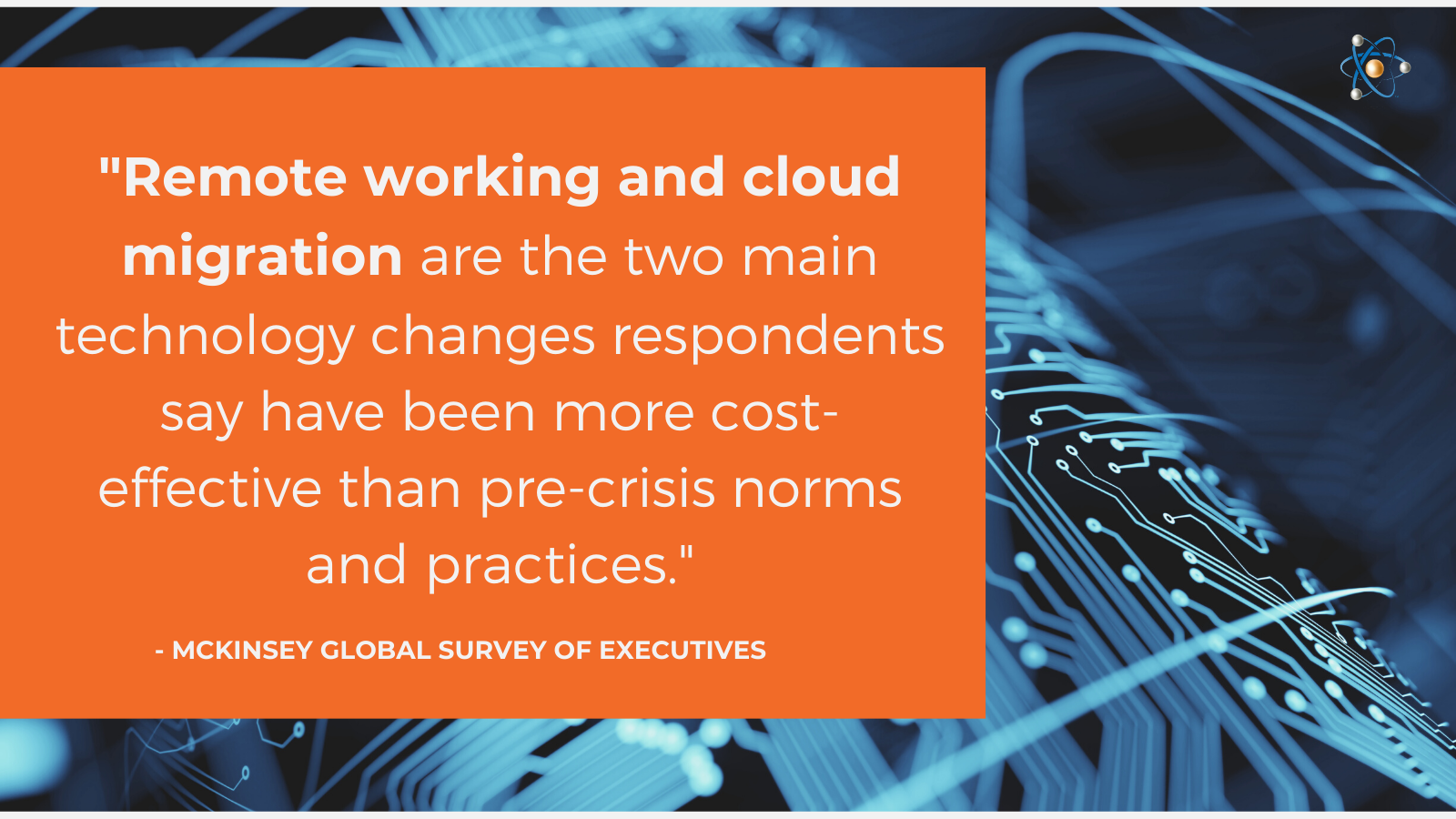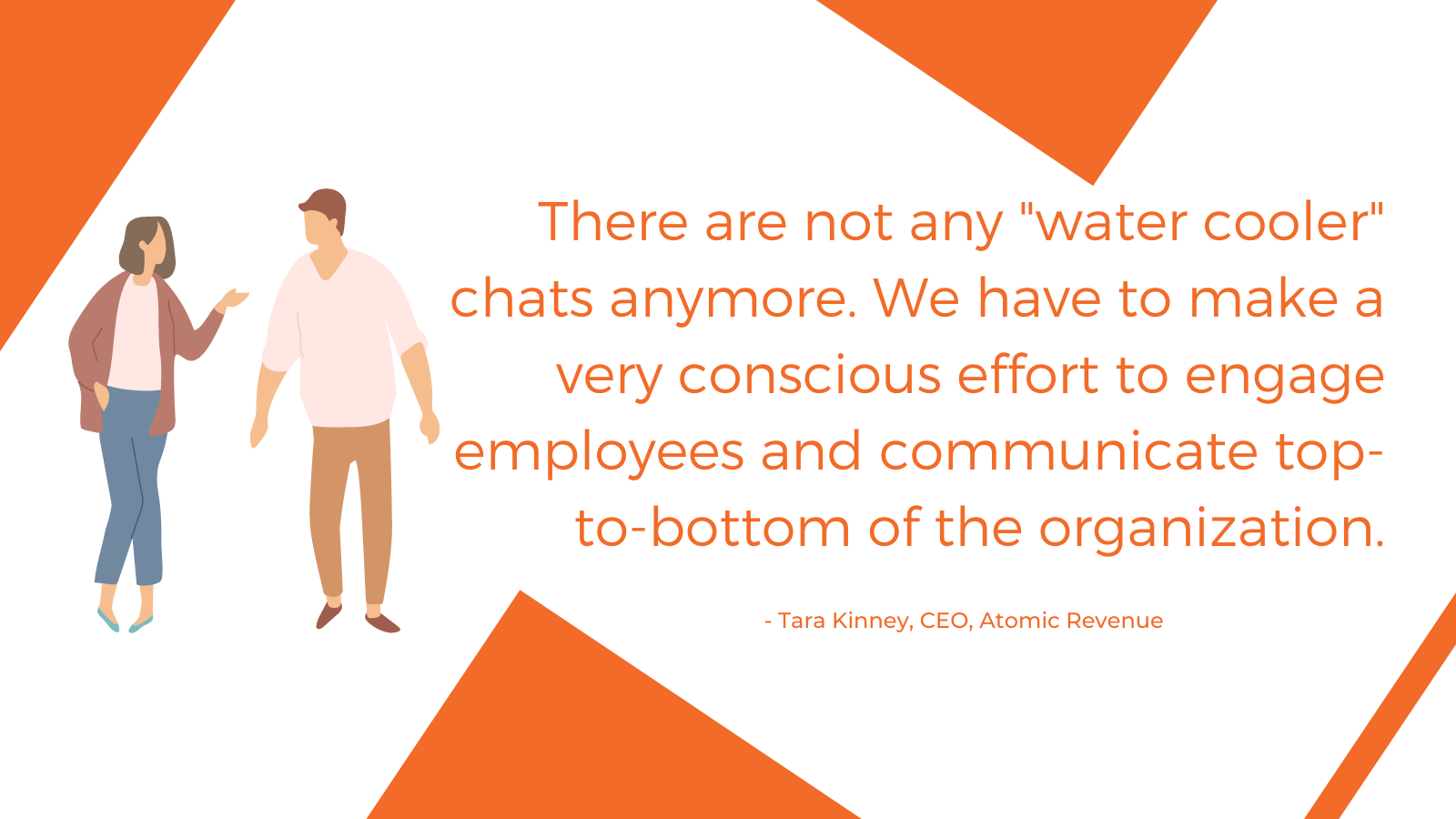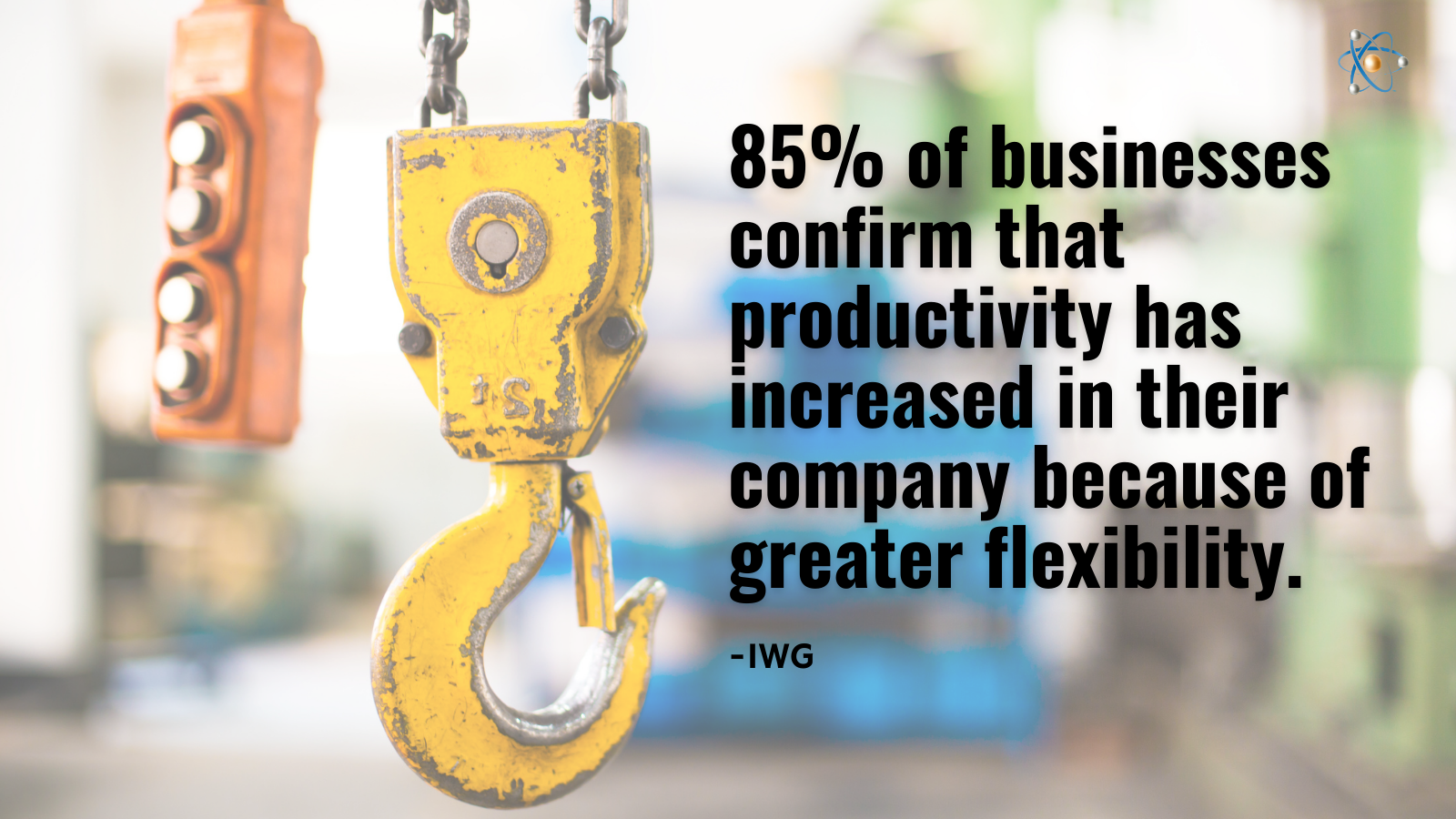
Last month, our team helped lead another edition of Midwest Manufacturing Advisers’ Tough Topics in Manufacturing webinar series, featuring speakers from Swip Systems, Mueller Prost, Evans & Dixon, and Atomic Revenue. In keeping with the theme, our panelists discussed manufacturing business strategies (both pre- and post-COVID), technology and remote working, employee safety, budgetary factors to consider in 2021, marketing and sales strategies, workplace environments, and more.
Since most of this information will be relevant and useful for quite a while, we’re sharing the MMA experts’ thoughts and solutions to the tough topics examined during the webinar. But first, let's introduce our panelists before we dive in:

Tom Swip, President and CEO of Swip Systems, has been developing and streamlining business processes for over twenty-five years and possesses a wealth of knowledge about business process automation, software and application design, and network infrastructure.
Gerald Richardson, Labor and Employment Law Attorney and Member at Evans & Dixon, helps employers manage problems in their relationships with employees and job applicants. He has further advocated on behalf of employers in both labor- and employment-related litigation for thirty years.

John Oeltjen, Director of Risk Advisory Services at Mueller Prost, uses his 40+ years of knowledge and experience with internal controls, lean manufacturing and process improvements, along with his expertise in strategy development, corporate finance, and information management to help clients improve their businesses.

Tara Kinney, CEO and Co-Founder of Atomic Revenue, draws from over fifteen years of corporate communications experience to translate complex ideas into successful marketing, sales, and customer success strategies.
Want to watch the reply instead of reading the recap? You can watch it right now here.
Adjusting Long-Term Strategy
Question: How has your long-term strategy changed pre- and post-COVID? And what do you think will change regarding that pivot?
John Oeltjen: Our manufacturing clients have learned one major thing, which is something that previously wasn't that broadly accepted. And that is to develop a strategy that is both nimble and responsive to the opportunities and the conditions that are on hand.
Other areas where they've adjusted their strategies include looking at their logistics and foreign/local sourcing to determine, “Do I have the right mix? And do I have the right sources?” Reshoring (bringing manufacturing and services back to the U.S. from overseas) has become popular recently because companies recognize, “Hey, we can't get all of our masks and supplies from China.” Do we really want to run the risk associated with our sources only being in one country?
Worker safety has also become part of the strategy process, and product development has also started to change. We do a lot of research and experimentation work, and we've seen that companies are beginning to focus on new products and new product categories, because they recognize that some of their products may not return to the pre-COVID levels, even post-COVID. The other one is facilities. With people working from home, more and more companies are now looking at that as a human resources strategy.
Tom Swip: Strategy is hard to calculate long-term right now, but we can be a little more tactical about our strategy. That may sound odd, but like John said, you can be more nimble and look at more tactical efforts in the short term regarding the things you would like to do, such as ramping up sales. We have a client who looks like they're going to have a depression at the end of 2022, so they're looking at building a huge backlog now so that when that time comes, they can work through it.
Internally, we've automated every system that we can possibly think of. So anything from collecting the mail to putting out estimates, we’ve asked, “What is the backup of this in case something similar to COVID were to happen again in the future?”
In addition, we've never stopped marketing. That's one of the things we've seen a lot of people do – stop marketing – and it can be a death sentence. Instead, we recommend that manufacturers do the opposite by going out and finding new markets, markets they may not have been in before. For example, look at targeting larger clients who will actually survive through the current times, as well as any future pandemic along these lines.
Tara Kinney: Agility and automation are absolutely on my list for how long-term strategies are changing, but I primarily focus on data and diversification. Those are the two areas that give you the ability to be flexible and pivot when things change. We all knew we were supposed to be diversified before, but now all of a sudden, that is an elevated effort and strategy. I agree that being “stra-tactical” and balancing short term objectives with long term goals is important.
And if there's good data, manufacturers could know what their objectives are. However, historically, this industry has been a little lax in the data and parts of the organizations that when they're disrupted, don't know what “stra-tactical” moves to make. What do we need to do right now? And so it's not only about agility, but the ability to be fast when things change. Because if you don't have the data, you are ultimately going to be slower to make the change than your competitors, who do have good data.
![]()
Learning Timeless Lessons
Question: What lessons has your coronavirus-pandemic workplace taught you that you will carry now into a post-pandemic workplace?
Tara Kinney: I think the pandemic has reminded us that every single day, every single person in our company is making decisions that impact everything else. And most of the time we have not provided data to the people in our organization who make those decisions. So now that people are working in diverse locations at different times of the day, giving people the information to make good decisions every day, all day, is really important. The other thing is having good data at the management layer, so that we know what everyone's doing and we know how to make changes and how to modify what's happening.
Gerald Richardson: For most employers, and manufacturers especially, they need their workers to feel safe to return to work or to continue working. So a heightened awareness of safety, and safety in a much broader sense. Many employers looked at safety in terms of, “Is there an OSHA regulation I must follow?” and that's not good enough.
What you really have to do now is look at and work with your employees. And because of COVID-19, there are a number of things that have become somewhat ordinary, but are very important in adhering to CDC guidance. Things like social distancing in the workplace, which can require some reworking of the workplace. Many employers have looked at their ventilating equipment and are improving that technology. Certainly, daily health checks are something that were never done before this pandemic but have become rather routine.
We’re also seeing health checks going through phases. So, where they may have been done at the workplace, they're frequently now done before employees even go to work. There may even be an app where they can easily answer questions. There's a progression happening, and it's something that's important to stay abreast with. And I think one of the biggest changes that can affect manufacturers is the concept of remote working. Certainly, administrative staff and sales teams are likely candidates for remote working, but there are also some manufacturers where machine operators can work remotely.
It's an entirely different workplace than the one before the pandemic. It's one that works well for some employees and not so well for other employees. So, employers have to be sensitive to that and adjust how they deal with their workers because of these big changes.

Technology and Remote Work
Question: Jerry mentioned apps, how does technology tie into these remote work topics?
Tom Swip: In my home, we have an alarm that goes off at about seven o'clock every morning. It’s a reminder to have our girls check their temperatures and submit their temperatures to their school inside of their app. Similarly, we've seen a lot of manufacturers really lean on app technology to get their workforce more connected to the company, more connected to inventory, and more connected to vendors along.
Remote and hybrid work policies are another big one for us. Remote work is mostly about trust; it's easy to see people in the office and see that they’re doing the work they’re supposed to. That’s not the case with remote work, so we've learned to trust our people more. We've gone with a hybrid remote policy where we're in the office part of the time and out of the office the other part of the time. It kind of goes back to that old saying of, “delegate, but follow up.” Make sure you’re passing off, in detail, what you need, and then follow up to make sure everything’s been done. And most people will do what they need to do. Now, that doesn't apply to everybody and it can't apply to everybody, but that's one of the lessons that we've learned.
The last one is just never waste a good crisis. When you’re getting ready to host a party, you get your house completely ready and all those things that you wanted to get done are finally done before the party, because you had a deadline, right? That's kind of what this was like, getting everything done that really needs to be addressed.
Gerald Richardson: For remote work, I’ve run into clients who go with a “trust but verify” approach so that there's monitoring of computer use and such. I think another thing that comes into play is flexibility when dealing with employees. You're certainly going to see a number of employees who are exhausting their 12 weeks of leave for childcare, and the employer, to the extent that it can, ought to try to find ways to work with employees when this happens. For example, allow some flexibility in a case where two parents, who have different work days, can manage their kids without penalty, and those kinds of things. This will pay off with greater loyalty and more productivity from those employees in the long run.

Getting Back to Growth Mode
Question: How do manufacturers pivot their strategy from survival-mode back into growth-mode?
Tom Swip: With 2021 strategy planning well underway, that’s a question you get a lot here in the last quarter of 2020. You may have heard from an earlier webinar that we had on tough topics, “the virus is actually fear.” COVID is obviously out there, it’s a very real and concerning thing. There are still people who are afraid to leave their homes, which is okay. But fear is leading a lot of our decisions right now. And if you make a decision or answer a question based off of fear versus based off of what you need or what you want to accomplish, you come out with a very different result. So, what we've tried to do is just generally get over that fear, and that’s what we're recommending. Those people who may not be as fearful as others should lead us into the next economy, so to speak. We need to get ourselves back to some sort of normalcy, as much as we can.
We also need to get back to strategic thinking, get back to a growth mindset, a growth mindset that thrives on challenges. There has never been a challenge like this before. So if we want to really face this thing head on, as a challenge, we need to get back to problem solving and some of the things that we do best as business owners and high-level executives. If we go back into the portion of our brain where we're used to solving problems, and we get out of the fear portion of our brain, I think we're going to make a lot better headway over the next several months.
Tara Kinney: It's tough because as business leaders, we tend to be a little bit bigger risk takers than some of the people that work in our organizations. And if you have multiple people leading your company, you're going to find that some of them are more risk-tolerant than others. So, trying to help everyone be comfortable with some of the risks that have to be taken right now, when that might not be their natural state, brings itself back to several of the topics that we're talking about, such as disseminating information. Can we give everybody information so that they can feel more confident about some of the risks involved in the problem solving?
We never know what the future will bring, even more so now. With all the unknowns for next year, we still see a lot of people frozen, which can lead to the entire leadership team of an organization freezing when a couple of key players aren't confident in the decision to move forward. This also goes back to data – what information do we need in order to make the decision? How are we going to measure when something new that we're going to do is working?
The other piece is increased communication, because regardless of whether or not business leaders of manufacturing facilities are comfortable moving forward, if you have a great strategy, you're going to move ahead. But it’s not going ahead as normal. Instead of having watercooler chats at the office and getting comfortable that we're all on the same bus, or rowing in the same direction, now we have to make a very conscious effort to engage employees and communicate top-to-bottom of the organization.
Making decisions at the leadership level and dragging everybody else along is not going to work when half the company is still in this fear-based mentality and not sure how to proceed. So we're going to have to invest a lot in communications going forward in order to pivot or move our strategies.

Addressing Marketing and Sales
Question: How can manufacturers change their marketing and sales plans to reach customers in this current environment? How do they make changes when we don't have all the information?
Tara Kinney: This question is great because it goes back to trust. We're talking about whether your clients, your prospects, and your market trust you. And when they can't see you, do you even exist? Who are you trying to talk to? Are you still present in their world now that everything has changed? People are not in the places they used to be. They are not meeting you in the same way they used to. Their schedule is different than it used to be.
Because of this, we need to define or re-define customer and prospect engagement. Where are they, what are they doing now? And how do we continue to maintain an established trust in the way that we're working with them?
Again, the answers to these questions lead to that scary fear-of-change factor. First, you’ve got your sales organization and your marketing organization who have always done things one way, and we tend to have a lot of other people in our organization who don't necessarily understand what's going on in marketing and sales. It's some kind of magic sauce that shows up in the financials later. This needs to change.
To reach our target market where they are now, we need to work on training and developing for our marketing and sales teams, not just acquiring the tools and techniques to change to the way our markets buy from us, but the training itself. Some leaders say, “I'm going to get a new tool because it's the way everyone engages these days, but we're going to skip the 12 weeks of training.” They’re just going to “figure it out.” Well, that's putting an awful lot of burden on your people. You're not only asking them to handle the change, but then figure out how to do it all on their own. Don’t skimp on the training and you'll be able to meet your market where they are now and where they are heading down the road. The way we sell and generate revenue will be very different going forward.
Tom Swip: I remember hearing back in March that this might last until June and I remember thinking, “There’s no way!” Well, Thanksgiving is next month, so it’s obvious that we're going to be this way for a while. So, what I've tried to do and what I've recommended is just to learn how to do the same things you used to do, but just do them virtually. Like right now, we're learning virtually. We can't network like we used to, but there are plenty of ways to do that virtually, too.
You should also think of it along the lines of getting your virtual presence right. Your camera angle, your lighting, having conversation starters. Tara has those posters in her background there, those are great conversation starters, or asking John about the cool chair in his background, something along those lines. It’s about using that virtual environment to actually conduct a normal conversation. Encourage people to turn their cameras on and engage with the whole virtual experience.
Empowering Sales Through Technology
Question: How do we empower our sales teams if we're going to change our sales and marketing strategies? How do we empower them to get what they need to succeed in today's market?
Tara Kinney: There are a number of people who have been training, coaching, and developing people to deliver conversations on video and in virtual ways. Edward Jones has invested a ton of money in this space. I have always engaged with many coworkers, clients, and prospects virtually because they are in a different geography, which is more and more acceptable now.
When it comes to changing how they do things, a lot of your sales and marketing staff may be asking, “What's in it for me that can help me make this change to virtual? I'm not incentivized to change and I'm not embracing the change just because I have to.”
It's important to think about who we're asking to make the change and what resources they need. It can be a very individualized transition for each person. But some of the people who have been selling in person now need to sell virtually, and they could need some coaching on how to present better on camera. I've been practicing talking with my hands where you can see them because I'm a “hand-talker.”
It’s also crucial to be able to deliver the same message when people can't see you. How can I combine phone, email, video, and all these different techniques to communicate with my market most effectively? That’s where automation comes in. If you can automate those tasks, it will be easier for your sales and marketing people. “Oh, I'm supposed to call now.” “Oh yeah, this time I'm going to set-up a video chat.” It'll really help some of the team members adopt new technologies because that automated workflow is going to tell them which technology to use when.

Managing Workplace Safety
Question: How well have employers coped with COVID-19 workplace safety guidelines (staggered work shifts, work from home options, cleaning and sanitizing, etc.) and what else should they be doing for their employees right now?
Gerald Richardson: I think on the whole they've coped fairly well. There are some lawsuits out there and OSHA has started issuing some citations, but they're relatively low in number. And for the most part, if you're going to operate, you're finding a way to do it so that the employees feel safe, and that's the most important thing. Things like social distancing don't have a dramatic cost for most. There can be associated costs, but they're really not that expensive. It’s just a matter of making the change and adjusting the culture to one that's more proactive about safety in the environment.
Question: Has your organization or have your clients’ organizations implemented rigorous cleaning and sanitation protocols? And if so, will these measures continue beyond the pandemic?”
Tom Swip: We’ve seen both ends of it here. Luckily we've been able to make hand sanitizers available, as well as cleaning sanitizers for wiping down office surfaces and things like that. We have masks available, and everybody was already socially distanced because of the layout of our personal offices. But now we spread out in the conference room, and hold meetings at other locations in the building as a result of getting too many people in one spot. So we've seen that side of it, where for us it's been pretty simple, but I also know clients who are commercially spraying systems, as well as implementing lighting systems that kill bacteria.
John Oeltjen: I think we'll keep doing it. And I think people’s fear will last for quite some time about a possible pandemic in the future. We've even seen the in-depth cleaning occur on the shop floor with respect to controls that maybe were never cleaned in the past. I think you're going to continue seeing things like that. In speaking to our manufacturing clients, they're all wanting to learn new ways to be more effective at this. Not just in the office, but also in the plant. I think sanitation will definitely be a concern for a long time.
Handling a Vaccination
Question: When the FDA does approve a COVID-19 vaccine, to what extent should employers require their workers to be vaccinated as a condition of employment?
Gerald Richardson: Given all the politicization of this issue, I think employers need to be a bit cautious, so let's look at it from two perspectives. One is, “What does the law allow an employer to do?” And certainly the law allows an employer to make it a condition of employment for employees to be vaccinated in order to be in the workplace. There could be some exceptions: if someone has a disability and for the reason of the disability cannot take the vaccine. Also, religious beliefs can factor into whether an employer has a duty to accommodate those beliefs. But I think wise employers will go about this slowly and probably do things more on a voluntary basis. They will bring in a provider of the vaccine to the workplace and make it available at no cost to their workers. They'll highly recommend it, but there's going to be some suspicions that perhaps the vaccines have been rushed through a process because of promises made during an election campaign.
Employers ought to tread lightly with this issue and they may have to make some adjustments for workers who don't get vaccinated, because they do have a duty to keep all their workers safe. And so there may be some isolating of particular workers who aren't vaccinated from those who are, and other things that an employer ought to do given those circumstances. But I think employers should take kind of a soft approach to it. Ultimately, that may change over time once there's more acceptance toward the vaccine, then it may be the wisest thing to do in the long run to require vaccination for everyone.
Tara Kinney: No matter how your company wants to do it, these are not normal things for your HR department to have to communicate with your employees. So there's an internal public relations element to the words that are chosen and how your HR people are trained to have these conversations, because it doesn't matter how much you force it or make it optional. There are people who are going to light-up and go straight to the HR department, and your HR people are not necessarily going to be prepared for that conversation. So it's time to bring some of the PR you've used externally, internally with your employees on this particular topic.
For example, there is the speculation that masks will become an ongoing US fashion trend, the same way that a lot of other countries wear masks. This may be one of many things that companies can broadly adopt and make it fun to keep protections high so people don't start dropping their guard as we head into 2021. Again, internal PR all the way.
Upgrading Talent in a Pandemic
Question: How can manufacturers take advantage of the current labor climate to upgrade their talent?
John Oeltjen: Companies should be asking, “Can we attract remote talent that might be of a more permanent nature, from a broader geographic territory, and maybe even with a broader skillset than what we've previously been able to do?” More and more companies are doing that. They also ought to be asking, “Are there industries that run parallel to our service needs or our employment needs that might be suffering and have talent available to work?” For instance, we have a client who does machine operations and does not serve the automotive business. But now they've gone after the automotive personnel who might be slow or not working because of the slowdown in that industry.
It’s not being vultures, but it is being proactive in determining remote work skills and looking for creativity about what else workers can do. Like Jerry said, people are now looking at running equipment from remote operations, using robotics or using pre-planned programs. There's nothing to say that a running a machine has to involve a person sitting there inside the plant.
Tom Swip: With the unemployment rate on the rise, there are a lot of people looking for work. There are a lot of A players who have gotten laid off from some incredible roles, it’s just a matter of finding them. But do be aware of the people who were probably laid off first, the people who needed to go anyway and the pandemic was maybe just used as an excuse to get them out the door.
There are two books that were recommended to me not long ago, one called “Topgrading” by Bradford Smart, and the other called “Who” by Geoff Smart. They are both excellent books about zeroing in on interview techniques, what to look for, how to go about finding the right A players. There is a lot of good talent out there, it’s really a matter of figuring out if they are top players and then bringing them onto your team.
Question: Overall, what are the top areas that manufacturers are outsourcing or areas they are taking back in-house that were previously outsourced?
Gerald Richardson: I do see a number of employers and manufacturers looking for ways to keep up with everything that is going on with COVID-19, because you have CDC guidance, you have OSHA guidance, Equal Employment Opportunity Commission guidance, and all of this guidance is evolving over time. So if you look at what was in place in April of this year, and now you look at what's in place now, they're different and sometimes markedly different.
For example, last week, the CDC changed the definition of contact with a person who has COVID. So instead of looking at a period of contact within 15 consecutive minutes, it's 15 minutes over a 24-hour period. That’s important because it determines whether you have to quarantine people, if someone has that kind of contact and they're not showing any symptoms, you quarantine them. And if they have no symptoms for 10 days, you can bring them back. These things are hard to keep up with, and so many companies are looking for experts who spend their days keeping up with the changes in guidelines and regulations.
John Oeltjen: Many companies are looking to not totally outsource functions, but to supplement them. For example, “Hey, I'm going to supplement my HR administration because they are just overwhelmed right now with the issues they're addressing.”
Another one is the IT department. Maybe they’ve not had 95% of their workforce working remotely, and now they need to have certain things outsourced. I do think COVID is accelerating the number of people looking at utilization of the cloud and outside IT support services. Another area is logistics and supply chain optimization, where companies are saying, “We’ve got to make a lot of changes, and we need help getting that done."
And then there are CFO services which, not to be self-serving, but CFO services are frequently being outsourced in an increased fashion because companies current accounting and finance people just do not have the time. Now they’re looking at project-based outsourcing on some of those things. I think outsourcing and the gig economy will only continue to grow.
Tara Kinney: I think that everyone is getting wiser to obtaining specialized expertise for temporary or short-term projects to deliver “level 10” talent versus hiring an employee who might be a generalist across 10 different skill sets. With the gig economy, we're seeing manufacturers that are a little more hesitant to adopt some of these changes compared to tech companies and the like. But it’s becoming a risk to keep certain employees onboard because you could get a level 10 fractional expert to augment your team. I can get a specialist in a specific area, and they don't have to be local anymore.
The other thing with the pandemic is that you can get a specialist, regardless of location, to do the work for you and do it faster. And you don't have to spend resources managing this person because he or she already knows what needs to be done. Those are some of the reasons why companies are using more fractional executives, fractional managers, and remote subject matter experts.
Budget Planning for 2021
Question: What’s the one thing companies need to factor into their budget for 2021 that they may not have had in 2020?
John Oeltjen: Productivity. I'm concerned that, as people migrate to remote, there could potentially be a dip in productivity. That may not be the case, but that initial curve is still being developed.
Gerald Richardson: If you're bringing people back into the workplace, I think you have to look at testing seriously. There's a great example at the University of Illinois with saliva testing that has been approved by the FDA. They started in July, and they haven’t had any flare ups. But it’s not testing alone, it’s testing along with contract tracing. There are apps for contact tracing that enable you to track workplace contacts very efficiently. Those are things that employers ought to have in mind.
Tara Kinney: Data and not more spreadsheets. If you can automate your data, you can get it into the hands of people, no matter where they are. People know the data specific to their roles and the productivity of the people that they're managing, which means you must look at your systems and whether they're capturing the data you need to pull into a dashboard. You’ll also have to determine if your processes are capturing the data that's needed to produce the information that all the people within all the layers of your organization need access to.
Tom Swip: Automation. Back to what we talked about earlier, looking at all the processes you couldn't get done when we had to go remote, a lot of people will overlook automation as a solution. They’ll just live with the spreadsheets and the disjointed data and all those inefficiencies. But if you want to be fully remote and survive, you have to get on board with process automation.

Savvy Financial Planning
Question: Do manufacturers need to make plans now to make sure that financing is adequate going forward to allow them to take advantage of all these different opportunities? What do they need to do?
John Oeltjen: You always need not only your current source for financing, but the next two as well. In today's lending/borrowing environment, there is a need to accelerate your development of relationships with potential new financing sources. We've seen several clients need to change financing sources not because of poor business, but because the business has been exponentially growing so they now need to have a new business partner from a fresh lending source.
Tara Kinney: It’s about moving from the mindset of cash preservation to cash excellence. Are we spending money in the right areas for our business to succeed going forward? And what kind of financing do we need to line up for that? There's been a cash-preservation mindset this year, but business is all about spending money in the right places to grow. We need to unlock the ability to spend money where it's needed. I think it comes back to internal operations and knowing how to utilize financing relationships for a cash-excellence kind of mentality versus the fear-based, preservation mentality we've been living this year.
Questions from the Audience
Question from the chat: My company is having significant difficulty attracting and retaining temp labor to perform COVID cleaning in the plant. We can’t seem to attract and retain help in this area. What should we do?
Tara Kinney: One of the groups I would suggest consulting is your state labor department, because everybody who is currently on unemployment has to be engaged with the state labor department in some way. They have a record of every single person who's on unemployment and filing for unemployment, and they feed them jobs. These people can't turn down those jobs the way they can other jobs because they'll lose their unemployment. So I would utilize your state labor department to try to get some candidates because there's a little bit more influence for them to stay with you and take those opportunities.
Gerald Richardson: I think you need to be careful. You can't just hire anybody to do these jobs. If you're going to directly employ people, you're going to have to train them, which means must know the pertinent regulations, the correct kinds of cleaners, and what the obligations are for disclosing what's in those cleaners under the Occupational Safety and Health Act.
So it's not just about getting labor in place, there's a lot more to it. You may not need a full-time person because, depending on what you're doing and your workplace, you may not need to be cleaning every day, which can also vary quite a bit. If you're in a plant where it's impossible to socially distance, there’s going to be a lot more cleaning there than if you do have social distancing, for example. So it's probably good to look for contractors who have the experience necessary to do it.
Question from the chat: How do you see the pandemic affecting M & A activity with manufacturers in 2021?
John Oeltjen: I would say that based upon recent levels of activity, we are back to not only recovering, but actually expanding as companies are pivoting and recognizing that there are still opportunities out there to grow, and either buy or sell. The reports that I'm reading show that the activity in the third quarter preliminary estimates were about 80% of the prior year. And they expect that for the year, we'll be back on pace with prior year activity levels.
I can tell you from our own experience right now, we're seeing as many deals as we've seen in quite some time. It's exciting because the one thing that has changed is that sellers frequently are being asked to take a little bit more risk in the ongoing business, either through ownership or through earn outs, than they may have pre-pandemic.
Question from the chat: What would be a typical rate of pay per hour for those contract cleaning jobs mentioned before? Where could I get the answers to that?
Tara Kinney: I wanted to drop a quick strategy in here for you, because this ties to both of your questions and I think it's a strategy that works for this particular role. In China, when they shut down the economy for the pandemic, they started labor sharing between employers. Restaurants would keep their employees on employment and lend them to another company that needed to ramp-up production. Think about the hospitality industry in your area where they have cleaning procedures, but they have reduced capacity. Are there partnerships you might be able to create to share some employees that those companies want to keep on staff, but can't utilize full time?
I have a feeling that in the current climate, though you can get rate information on some of the job boards, it may be somewhat irrelevant. Your state labor department may be another good resource to get up-to-date rate and employment information.
John Oeltjen: I've seen a number of business writers who actually take the position that we're describing and encourage companies to revisit the importance and purpose of that position. Not only for a job description, but also to help recognize that the cleaning position and this function are extremely important. The importance of it is a big aspect of what should cause somebody to revisit and reconsider the job in question.
Gerald Richardson: A lot of this cleaning was never done before, so the processes are entirely new. The state departments of labor, they're different from the divisions of employment security. Your state department of labor is a good source for what the pay rate is for particular kinds of positions. They're surveying that and getting that information on an ongoing basis, all the time. So in terms of prevailing wages, the state department of labor is what I'd recommend.
In Summary
There is so much great information here. In summary, as we finish a year like no other and head into what's sure to be a very unusual (and potentially uncomfortable) year ahead:
- Manufacturers need to look at developing a strategy that is both nimble and responsive to the opportunities and the conditions at hand.
- Technology must play a role for increased productivity, communication, employee safety, and data-driven, measurable growth.
- Automation needs to be addressed – it can allow line operators and other production staff to work remotely if needed.
- Use this opportunity to rethink logistics and your own sourcing.
- The key word for the year is "flexibility," with employees, with each other, with adjusting the plan, and being able to agree on and implement changes quickly.
- Leadership teams, tough as it may be, need to overcome fear-based decision making and get back to problem-solving and moving forward in a new paradigm.
- And, whatever you do, do not stop marketing and selling. Those who stop send a message that they're unavailable.
- Build trust with B2B marketing and sales that reaches your market with the right message at the right time in the right place.
- Empower sales through technology, training, and automation.
- Manage workplace safety and the vaccine by staying up-to-date on the latest CDC/OSHA guidelines while considering your employees needs.
- This may be an ideal time to upgrade your talent, either with contracted roles or with new employees who may have been let go from another company. With remote workers, you have an entire nation of talent to choose from.
- Savvy budget and financial planning requires a growth mentality and building new financial-resource relationships.
- Utilize your state's department of labor with help in finding staff and for wage guidance.
Watch all the goodness in this webinar live right now. You can catch it here.
Solving Manufacturing Challenges With Atomic Revenue
Do you have questions about the topics in this blog or need more information from one of our experts? Please do not hesitate to reach out and ask. We are all here to help our manufacturers though this crisis and into a better future.
If you’re struggling with hard-to-solve problems and bottlenecks in your company’s Revenue Operations process, Atomic Revenue can help! Contact us to discover the path to achieving your business goals.
 About the Author
About the Author
Adam Patton is the Digital Operations Manager at Atomic Revenue. Adam believes in the power of earning trust over demanding attention, and nurturing relationships over churn-and-burn sales strategies. Pairing his background in journalism with a modern marketing skillset, Adam uses strategic storytelling to create content for social media, email campaigns, company blogs, and more. Adam’s expertise helps create digital marketing strategies that engage customers and support our clients in obtaining customer success and revenue growth.





